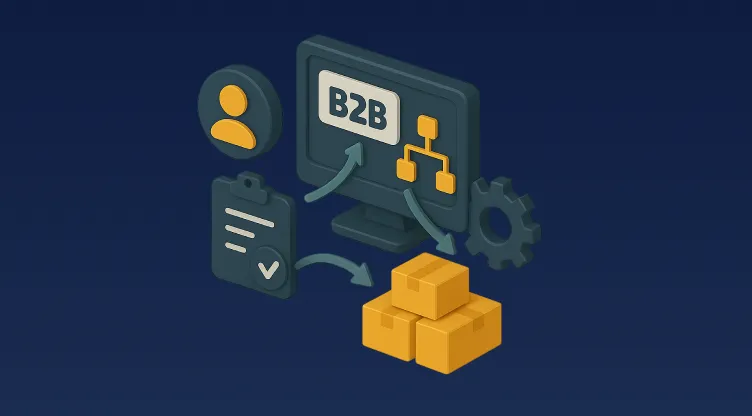Omnichannel Customer Service: Delivering Seamless Support via Phone, Chat, and Email

Table of Contents
In today’s fast-paced digital world, how you treat your customers defines your brand. Long gone are the days when a simple phone line was enough. Now, customers demand seamless, swift service across multiple platforms — from voice calls and chatbots to email and social media.
Providing a consistent and personalised experience across all these touchpoints is what we call omnichannel customer service. It goes beyond being present on multiple channels; it’s about connecting those channels to create a truly unified experience.
In this article, we explore why businesses must embrace an omni channel strategy, how an omnichannel order management system supports this journey, and why your customer service agents play a pivotal role in delivering satisfaction.
Service Simplified: Quick Bytes
Here’s your Fast Forward Guide:
- Customers want a connected, seamless experience across phone, chat, email, and more.
- Omnichannel service is proven to boost customer loyalty and repeat sales.
- An omnichannel order management system centralises data for faster, more personalised support.
- Empowered customer service agents are key to delivering real-time, effective assistance.
- Consistent communication, personalisation, and quick resolution drive long-term success.
The Shift to Omnichannel Expectations
Imagine a customer emails your company with a question about their order. After waiting a day, they call your hotline for an update — only to repeat all the details. Frustrating, right?
Modern customers expect brands to remember their context, no matter how they reach out. Research shows that 86% of customers expect conversations with customer service teams to move seamlessly between channels without losing information.
This is why embracing an omni channel approach is not just a competitive advantage — it’s a business essential.
What Is Omnichannel Customer Service?
At its core, omnichannel customer service means offering support across multiple communication channels while ensuring each interaction is part of a single, unified conversation.
It’s different from multichannel customer support, where businesses might offer help across different platforms, but those systems operate separately.
In an omnichannel system:
- Customer conversations flow from one platform to another without loss of information.
- Agents have access to full histories across all channels.
- Customers feel known, understood, and valued.
This requires strong integration between CRM tools, communication apps, and — most importantly — an omnichannel order management system.
Why Businesses Must Embrace an Omni Channel Approach
Today’s consumer behaviour is fluid. A customer might browse your Instagram page, start a WhatsApp chat, and complete a purchase on your website — all within minutes.
By adopting omni channel customer service, you can:
- Increase customer satisfaction by delivering consistent support.
- Boost operational efficiency with integrated systems.
- Drive loyalty through personalised interactions.
- Enhance agent productivity with centralised data access.
- Support higher conversion rates by solving problems faster.
On the flip side, businesses that fail to deliver seamless experiences risk high churn rates and poor brand reputation.
How an Omnichannel Order Management System (OMS) Powers Seamless Support
A fragmented backend leads to a fragmented customer experience. This is where a robust omnichannel order management system makes a game-changing difference.
An advanced OMS:
- Unifies sales, returns, and inventory data across all platforms.
- Tracks customer orders in real-time, allowing agents to provide instant updates.
- Supports multiple communication channels like email, chat, and phone natively.
- Automates ticket creation and escalation, ensuring no query is lost.
- Integrates with CRM systems to deliver a 360-degree view of each customer.
With all order and interaction data centralised, customer service agents can work smarter, not harder.
No more switching between systems, no more putting customers on long holds.
The Crucial Role of Customer Service Agents
Technology is powerful, but human interaction remains irreplaceable.
Your customer service agents are the bridge between your brand and your customers. In an omni channel model, their responsibilities go beyond simply answering questions — they become customer advocates.
Key areas where agents make a difference:
- Contextual Support: Picking up conversations exactly where the customer left off, regardless of platform.
- Personalisation: Referring to previous purchases, preferences, and past interactions.
- Empathy and Speed: Understanding customer frustration and resolving issues swiftly.
- Channel Agility: Switching between chat, phone, and email without losing coherence.
Companies that empower their agents with training, real-time tools, and authority to solve problems at first contact see dramatically higher satisfaction scores.
Challenges in Implementing Omnichannel Customer Service
Transitioning to an omnichannel setup can feel overwhelming without the right strategy. Common hurdles include:
Siloed Data
When customer data is spread across different systems (like separate chat, email, and phone platforms), it’s hard to deliver cohesive support.
Solution: Invest in an omnichannel order management system that integrates all touchpoints.
Inconsistent Brand Voice
When different teams manage different channels, the customer experience can feel disjointed.
Solution: Establish brand voice guidelines and train all agents uniformly across platforms.
Long Response Times
Without real-time visibility, agents may delay or mishandle queries.
Solution: Use automation, AI-powered routing, and real-time dashboards to speed up service.
Best Practices for Building an Omnichannel Support Strategy
To truly delight your customers, you must move beyond offering support on multiple platforms and focus on integration, consistency, and responsiveness.
Here’s how:
Map the Customer Journey
Understand how customers typically interact with your brand. Where do they start? How do they move between channels?
Mapping this flow ensures that every step feels natural and connected.
Centralise Customer Data
Use a single platform — ideally an omnichannel order management system — to gather order history, service interactions, and customer preferences.
Train Agents for Multichannel Excellence
Today’s customer service agents must be skilled at handling live chat, phone conversations, social media comments, and emails.
Provide regular training and tools that allow them to switch smoothly between channels.
Offer Real-Time Support
Whether it’s a chatbot handling FAQs or an agent jumping into a chat within seconds, real-time support is the expectation now, not a bonus.
Personalise Every Interaction
Use names, acknowledge history, and offer tailored solutions. Customers today expect brands to "know" them personally, not treat them like ticket numbers.
Future Trends: The Evolution of Omnichannel Customer Service
Technology continues to evolve rapidly, offering exciting opportunities to enhance the customer experience even further.
Emerging trends include:
- AI-driven proactive support: Predicting issues before customers even reach out.
- Omnichannel chatbots: Assisting across WhatsApp, Messenger, websites, and mobile apps without losing context.
- Voice AI: Handling routine queries and transferring complex issues to human agents smoothly.
- Unified messaging apps: Platforms where customers can move from shopping to support without leaving the conversation.
Brands that adapt to these changes early — backed by agile systems like an omnichannel order management system — will gain a major competitive edge.
Omnichannel Success Story: A Real-World Example
A premium lifestyle brand in the Middle East faced challenges with fragmented service across online and offline channels. Customer complaints soared, and repeat purchases dropped.
By implementing a new omni channel strategy:
- They integrated WhatsApp, website chat, and call centre operations.
- Customer data flowed seamlessly through an upgraded omnichannel order management system.
- All customer service agents received cross-channel training.
The result?
- 32% faster issue resolution.
- 18% increase in repeat purchases within six months.
- 45% improvement in customer satisfaction ratings.
This transformation highlights how unifying channels can lead to real, measurable business growth.
Conclusion: The Future is Connected
Omnichannel customer service is no longer a futuristic idea — it’s the present reality. Customers expect instant, personalised, and seamless experiences across all platforms. To meet these expectations, businesses must invest in unified technologies like an omnichannel order management system and empower their customer service agents to deliver excellence across every touchpoint.
Those who succeed will not only satisfy their customers but will build stronger, longer-lasting relationships that drive business success for years to come.
FAQs About Omnichannel Customer Service
What is the difference between omnichannel and multichannel customer service?
Omnichannel customer service connects all support channels into one seamless experience, so customers can move between phone, chat, and email without repeating themselves.
Multichannel service offers several platforms but does not necessarily link them, leading to disconnected conversations.
Why is omnichannel customer service important?
It helps businesses deliver a unified customer experience, reduce wait times, and increase satisfaction. Customers today expect brands to know their history across all channels without asking them to repeat information.
How does an omnichannel order management system support customer service?
An omnichannel order management system brings together sales, support, and fulfilment data into a single platform. It enables customer service agents to access real-time order updates, customer histories, and communication logs instantly, making support faster and more personalised.
How can I train my customer service agents for omnichannel support?
Train agents to handle multiple channels fluently, use real-time customer data, adapt tone based on the platform, and solve problems proactively. Tools like CRM integrations, agent dashboards, and chatbots can help make training smoother.
Can small businesses implement omnichannel customer service?
Absolutely. Today, many affordable and scalable omnichannel order management systems are available. Small businesses can start by integrating a few key channels like WhatsApp, email, and phone support, and expand gradually as they grow.
What channels should be included in an omnichannel strategy?
The channels you include should match your customers’ preferences. Common channels include live chat, email, voice calls, SMS, social media messaging apps like WhatsApp, and e-commerce help desks. The goal is not just to offer them, but to connect them.























